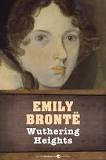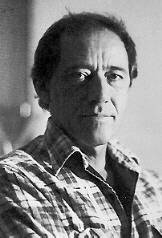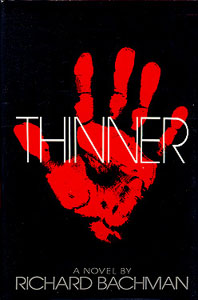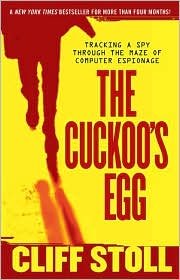by Elizabeth Zelvin
I've been hearing a lot lately about 3D printing—or producing or constructing or “making.” I was excited enough to write a post about it on my other group mystery blog, and it surprised me that the topic got so little response. I can't believe the SleuthSayers and their (our) friends won't have more to say about this the-future-as-predicted-in-science-fiction-has-arrived technology. In fact, one of us, I think Leigh, was right on top of the story about the 3D-printed gun.
 My hubby was particularly annoyed that all the hoopla about weapons cast all the extraordinary constructive uses of 3D making, present and projected, into the shade. He started bringing information and whatever samples he could get his hands on home after going to an exhibition of the latest 3D technology (he uses high-end copiers in his job at a university) and visiting a store in lower Manhattan called MakerBot where you can actually buy a "replicator"—a term long familiar to Star Trek fans—for the home.
My hubby was particularly annoyed that all the hoopla about weapons cast all the extraordinary constructive uses of 3D making, present and projected, into the shade. He started bringing information and whatever samples he could get his hands on home after going to an exhibition of the latest 3D technology (he uses high-end copiers in his job at a university) and visiting a store in lower Manhattan called MakerBot where you can actually buy a "replicator"—a term long familiar to Star Trek fans—for the home.
I also saw a YouTube video of in which the son of an old friend introduced the speaker at a design event in San Francisco about “the maker movement.” He said: “With simple and affordable 3D design software... access to digital fabrication services, [and] desktop 3D printers, ‘makers’ are turning their home offices into home factories.”
On the face of it, this new technology is a good thing. The speaker my friend’s son introduced was the CEO of TechShop, which bills itself as “America’s first nationwide open access public workshop.” From the website: “TechShop is a playground for creativity. Part fabrication and prototyping studio, part hackerspace and part learning center, TechShop provides access to over $1 million worth of professional equipment and software...at TechShop you can explore the world of making in a collaborative and creative environment.”
 Among the applications of 3D technology already in use is the making of relatively inexpensive prototypes of any kind of design. My husband brought home a cute little nut and bolt from the convention center exhibit (as at most conventions nowadays, there weren’t a whole lot of freebies) and a brightly colored expansion bracelet from the 3D store. Printed items listed on the site 3Ders.org include a robot that scoots along power lines checking for damage, individualized shoes in custom sizes, toys, high-performance bike parts, and fashion sunglasses.
Among the applications of 3D technology already in use is the making of relatively inexpensive prototypes of any kind of design. My husband brought home a cute little nut and bolt from the convention center exhibit (as at most conventions nowadays, there weren’t a whole lot of freebies) and a brightly colored expansion bracelet from the 3D store. Printed items listed on the site 3Ders.org include a robot that scoots along power lines checking for damage, individualized shoes in custom sizes, toys, high-performance bike parts, and fashion sunglasses.

Medical applications are also in use. An article on 3Ders.org describes how doctors are creating 3D-printed models of patients’ bone structure and organs to prepare for complex surgery. “Since the model is a facsimile of the patient's actual physiology, surgeons can use it to precisely shape metal inserts that fit along a patient's residual bone.” Even better, the patient spends less time in actual surgery, substantially reducing the risk of things going wrong.
And then there's the gun. I'm a mystery writer. Of course I'd thought of it the moment I heard about 3D technology. A May 5 article on 3Ders.org reported:
“Defense Distributed showed off the world's first entirely 3D printed gun last Friday and announced its plan to publish the blueprints for ‘The Liberator’ on its blueprints archive Defcad.org this week.
 There was a big brouhaha about it in both government and the media. Guns aren't mentioned on the home page of 3Ders.org today (as I write this on June 6, getting ahead with my posts). The lead story is: "3D printed mini yellow ducks debut in Hong Kong."
There was a big brouhaha about it in both government and the media. Guns aren't mentioned on the home page of 3Ders.org today (as I write this on June 6, getting ahead with my posts). The lead story is: "3D printed mini yellow ducks debut in Hong Kong."
Like every innovation in history, this new technology can be used for good or ill, depending on what people choose to make of it both literally and figuratively.




















 Lawrence Block wrote an excellent article on procrastination in his book, Telling Lies For Fun And Profit. The book is a collection of the columns Mr. Block wrote for Writer's Digest. In the article he talks about Creative Procrastination, the time we sometimes spend doing things other than writing. Not always, but often that time is really when our subconscious works on our story. Yes, really. Of course, that's not always the case. Often writers just put off writing and doing other things. I've vacuumed floors, cleaned bathrooms, done laundry, taken a walk or a shower just to keep from sitting down and working on my WIP (work in progress.) But he isn't saying to become a sloth either. What you have isn't necessarily writer's block.
Lawrence Block wrote an excellent article on procrastination in his book, Telling Lies For Fun And Profit. The book is a collection of the columns Mr. Block wrote for Writer's Digest. In the article he talks about Creative Procrastination, the time we sometimes spend doing things other than writing. Not always, but often that time is really when our subconscious works on our story. Yes, really. Of course, that's not always the case. Often writers just put off writing and doing other things. I've vacuumed floors, cleaned bathrooms, done laundry, taken a walk or a shower just to keep from sitting down and working on my WIP (work in progress.) But he isn't saying to become a sloth either. What you have isn't necessarily writer's block.










